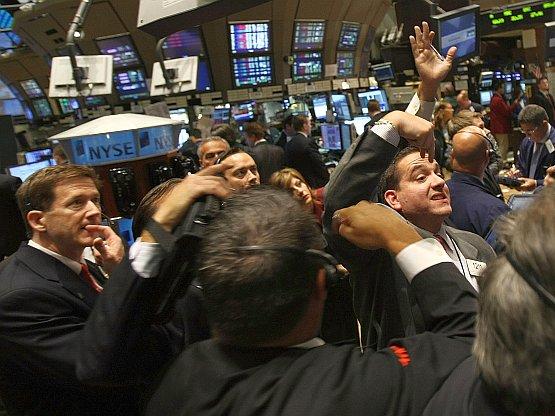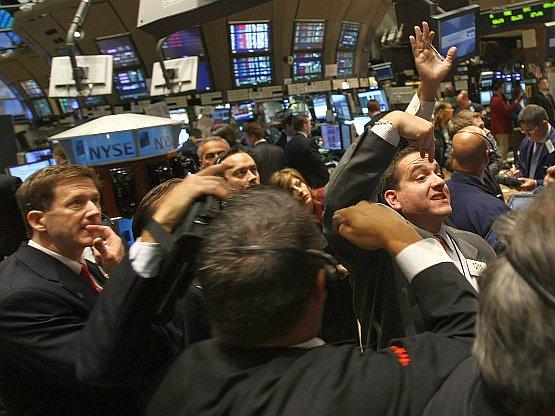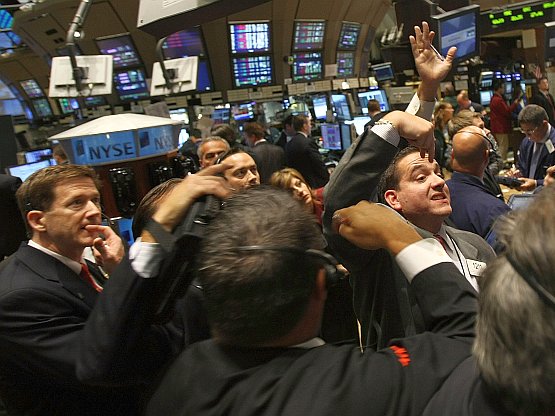The United States Treasury is on track to recover most of the $69 billion in taxpayer funds it used to bail out insurance giant AIG in 2008 at the height of the financial crisis, according to a 2011 Government Accountability Office report.
The Treasury announced the sale of $18 billion worth of AIG shares according to a press release Sunday. The issue is fully underwritten by investment banks such as Goldman Sachs and Deutsche Bank, and AIG itself will buy $5 billion of the stock using $3 billion in cash and $2 billion from asset sales, according to a filing with the SEC. The closing date of the transaction is unknown and a spokesperson from the Treasury Department did not respond to a request for comment.
The SEC filing is leaving out key figures, such as the number of shares to be sold and the price of the offering, which will be determined by the book building process. If the shares were sold at Monday’s closing price of $33.30, that would amount to roughly 30 percent of the whole company, reducing the Treasury’s stake to roughly 23 percent, according to calculations by Bloomberg. AIG stock fell 2 percent on the news Monday.
According to Lawrance L. Evans, author of a May 2012 report on AIG on behalf of the Government Accountability Office, the break-even price for the government is $29.69. “It will depend a lot on market conditions as well. The market is at a place … where it will recoup the initial outlays and generate some profit,” Evans told The Epoch Times in an interview, although he could not provide a numerical estimate.
Complicated Bailout Structure Resolved
If the Treasury manages to get rid of the remaining stake, it will resolve the last piece of the puzzle that completes the largest bailout of any company in history.
AIG almost went bankrupt in 2008, not because its life insurance and property and casual businesses were doing badly, but rather because of ill-conceived bets at its financial subsidiary AIG Financial Products (AIGFP).
AIGFP sold large volumes of credit default swaps—a derivative contract that insures the buyer from default of a certain asset—on collateralized debt obligations, which were made up largely of mortgage related securities. Once the housing bubble burst, prices for these contracts soared and AIG faced large marked-to-market losses. The firm was pushed to the verge of bankruptcy, as rating agencies downgraded its credit rating and creditors started to pull funding.
In a press release, William C. Dudley, president of the Federal Reserve Bank of New York (FRBNY), said that in order to “stabilize the financial system in the midst of the financial crisis” FRBNY and the Treasury stepped in with a total volume of $182 billion in credit and equity commitments to AIG. The FRBNY’s commitment was largely in providing immediate loans and setting up two structures—Maiden Lane II and III—that would let AIG subsidiaries sell illiquid asset-backed securities to shore up its capital. The Treasury mainly invested in equity, giving it control of 92 percent of the company after FRBNY and Treasury investments where clearly delineated in a restructuring in January 2011.
Much of the available volume was never used according to the Government Accountability Office. The FRBNY provided a total of $52.5 billion in credit, all of which was repaid by August 2012. According to the FRBNY, the “total net profit to taxpayers from the New York Fed’s assistance to AIG and AIG-related facilities was $17.7 billion,” consisting of interest, fees and gains from asset sales.
AIG funded the repayment mainly by selling stakes in subsidiaries such as AIA Group, Ltd. and using a recovering market to dispose of illiquid assets, as well as the recovering cash flow from its core operational insurance business. Once all remaining asset portfolios are sold, AIGFP will be completely shut down.
The Epoch Times publishes in 35 countries and in 19 languages. Subscribe to our e-newsletter.







